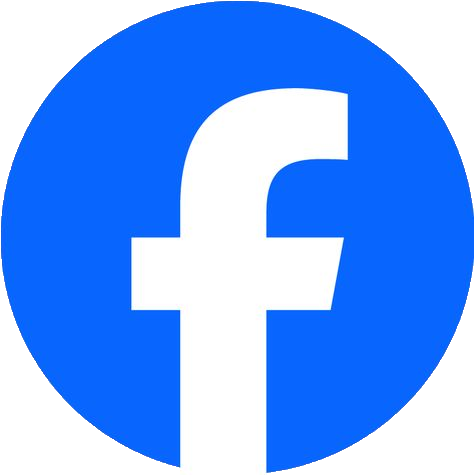
Fiber Optic Fabric Applications: Revolutionizing Fashion, Decor, and Performance
Introduction
The integration of fiber optic technology into fabrics has led to the development of an exciting new material known as fiber optic fabric. This innovative fabric uses light-emitting fibers woven into textiles to create stunning, illuminated effects. From fashion to interior decor and entertainment, fiber optic fabric is revolutionizing various industries by adding a new dimension to design. Whether it's creating visually striking clothing, dynamic home interiors, or interactive performances, the potential applications of fiber optic fabric are endless. In this article, we explore the diverse ways fiber optic fabric is being utilized and its future prospects.
1. Fiber Optic Fabric in Fashion: A New Era of Light and Style
Fiber optic fabric has opened up new possibilities for designers and fashion enthusiasts alike, allowing them to push the boundaries of creativity. Its ability to glow, change colors, and respond to light makes it a perfect choice for avant-garde designs in various fashion categories, from high couture to performance costumes.
1.1 Illuminating Fashion on the Runway
One of the most exciting uses of fiber optic fabric is in runway fashion. Designers are using it to create garments that light up in synchronization with music, showcasing stunning light effects that change with movement. Fiber optic fabric can be programmed to emit a range of colors and lighting patterns, giving designers a dynamic tool to work with. Fashion shows featuring fiber optic fabric often look futuristic, with illuminated dresses, jackets, and accessories dazzling the audience in dark environments.
For example, haute couture fashion shows have seen models strutting down the runway in dresses made entirely of fiber optic fabric. These garments can emit bright, multicolored lights that move and change in time with music, creating a dramatic and futuristic effect. It’s a powerful tool for designers who want to make an unforgettable statement on the runway.
1.2 Performance and Stage Costumes
The performing arts industry has also embraced fiber optic fabric to enhance stage costumes and performances. From musicals to dance performances, fiber optic fabric allows performers to create a magical atmosphere through light. This material can be integrated into costumes, accessories, or props, adding an extra layer of visual drama.
In dance performances, for instance, fiber optic costumes can be synchronized with lighting effects on stage, intensifying the overall experience. The glowing garments become part of the choreography, enhancing movement with ever-changing patterns and colors that captivate the audience. In addition, fiber optic fabric's ability to light up in low-light settings makes it ideal for dark stages or night performances.
1.3 Festival and Event Wear
Fiber optic fabric is increasingly popular in festival wear, especially in events like concerts, raves, and outdoor festivals. Attendees can wear outfits that light up and change colors, allowing them to stand out in the crowd and create visually mesmerizing effects. From LED dresses to illuminated jackets, fiber optic fabric transforms typical festival attire into something extraordinary.
For instance, during nighttime festivals, fiber optic garments glow brightly in the dark, creating a vibrant, festive atmosphere. This fashion-forward application of technology not only enhances personal style but also adds a sense of unity and excitement among festival-goers.
2. Fiber Optic Fabric in Interior Design: Transforming Spaces with Light
Beyond fashion, fiber optic fabric is also making waves in interior design, where its ability to produce ambient lighting makes it ideal for modern and artistic home decor.
2.1 Creating Ambient Lighting for Home Interiors
Fiber optic fabric is being used to design lighting features that elevate the ambiance of homes and commercial spaces. When woven into curtains, walls, or furniture, fiber optic fabric can create soft, glowing effects that add a futuristic or ethereal quality to a room. The fabric’s lighting can be adjusted to produce different colors and intensities, allowing for customizable lighting experiences.
In living rooms, bedrooms, and home theaters, fiber optic curtains or wall panels can emit a subtle glow, enhancing the atmosphere without the harshness of traditional lighting. The material’s ability to offer diffused light without the need for visible light sources makes it perfect for modern minimalist interiors.
2.2 Interactive and Immersive Design Features
Fiber optic fabric is also being used in interactive design installations, creating immersive environments where users can engage with their surroundings. These installations can be found in galleries, museums, or even public spaces, where the fabric responds to touch or movement.
For example, in an art gallery, fiber optic fabric might be integrated into a sculpture or wall, where visitors can alter the lighting by interacting with the fabric. The experience becomes highly engaging and personal, as users can control the color and intensity of the light, transforming the space around them.
2.3 Commercial and Hospitality Design
In commercial spaces such as hotels, restaurants, and bars, fiber optic fabric is used to create dramatic lighting effects. The fabric can be incorporated into partitions, ceilings, or decorative elements to add flair and sophistication. By using fiber optic fabric, businesses can offer customers an elevated experience with dynamic and changing lighting that enhances the mood.
For example, a luxury hotel might have a lobby with fiber optic fabric integrated into the ceiling, providing a gentle, starry glow that greets guests upon entry. This unique application enhances the design of the space while providing an aesthetically pleasing and calming atmosphere.
3. Fiber Optic Fabric in Entertainment: Enhancing Visual Experiences
Fiber optic fabric’s role in the entertainment industry extends beyond fashion and home decor. Its ability to produce stunning light effects makes it a valuable tool in creating immersive and interactive experiences for audiences.
3.1 Interactive Performances
Fiber optic fabric is used in various forms of interactive performances, such as theater productions, music festivals, and dance shows. Performers wearing fiber optic garments can interact with the audience through light displays that change in response to their movements or actions. This creates a more engaging and dynamic experience, as the audience becomes part of the performance.
For instance, during a live concert, fiber optic fabric can be used in the costumes of dancers or musicians. The lighting effects can be programmed to change based on the rhythm of the music, enhancing the synchronization of sound and light. This interactivity between light, movement, and sound makes the performance more captivating and engaging.
3.2 Light Shows and Concerts
In large-scale light shows and music festivals, fiber optic fabric plays a central role in creating a visually stunning atmosphere. LED fabrics and fiber optic installations are used to produce intricate light displays that can be synchronized with music or live performances. These visual effects create a sense of wonder and excitement for the audience, with vibrant lights flashing in perfect harmony with the beat.
For example, at a major music festival, fiber optic fabric can be used to create illuminated structures, sculptures, and even entire stages that glow and shift in color, adding to the overall sensory experience. The combination of music, light, and fabric creates a spectacular, immersive environment for attendees.
4. The Future of Fiber Optic Fabric: Emerging Possibilities
The potential of fiber optic fabric extends far beyond its current uses. As technology continues to advance, we can expect even more innovative applications in various industries. Some of the exciting possibilities include:
4.1 Smart and Programmable Fabrics
Future iterations of fiber optic fabric could be embedded with smart technology, allowing users to control the light effects through mobile apps or smart devices. This would enable individuals to easily change the lighting settings on their clothing or interior decor, creating a fully customizable experience.
4.2 Sustainable Fiber Optic Fabric
As sustainability becomes a more prominent concern in the fashion and design industries, there is a growing focus on developing eco-friendly fiber optic fabrics. These fabrics could be made from sustainable materials and produced using energy-efficient methods, helping to reduce the environmental impact of this innovative technology.
4.3 Expanding Use in Wearable Technology
Fiber optic fabric could soon become an integral part of wearable technology. From fitness trackers to smart clothing, the integration of fiber optic fibers could allow garments to communicate data or provide real-time feedback, such as indicating a person’s health metrics through light patterns.
Conclusion
Fiber optic fabric is truly revolutionizing the worlds of fashion, interior design, and entertainment. With its ability to light up, change colors, and create stunning visual effects, it is becoming a transformative material for creative professionals across various industries. As technology advances, we can only expect even more exciting applications for fiber optic fabric, making it an essential material for the future of design.






